Apr 5 2019, 10:16 am in National Poetry Month
I admit I know nothing about poetry. Except what speaks to me. When I open a book of poems I can honestly get lost in them. I marvel at the author’s ability to tell a story in a few lines. To draw me in and make me feel. I’m sharing a few.
Impromptu – To Kate Carol – Poem by Edgar Allan Poe
When from your gems of thought I turn
To those pure orbs, your heart to learn,
I scarce know which to prize most high —
The bright i-dea, or the bright dear-eye.
Where the Sidewalk Ends by Shel Silverstein
There is a place where the sidewalk ends
And before the street begins,
And there the grass grows soft and white,
And there the sun burns crimson bright,
And there the moon-bird rests from his flight
To cool in the peppermint wind.
Let us leave this place where the smoke blows black
And the dark street winds and bends.
Past the pits where the asphalt flowers grow
We shall walk with a walk that is measured and slow,
And watch where the chalk-white arrows go
To the place where the sidewalk ends.
Yes we’ll walk with a walk that is measured and slow,
And we’ll go where the chalk-white arrows go,
For the children, they mark, and the children, they know
The place where the sidewalk ends.
Oh, the Places You’ll Go! By Dr. Suess
Congratulations!
Today is your day.
You’re off to Great Places!
You’re off and away!
You have brains in your head.
You have feet in your shoes
You can steer yourself
Any direction you choose.
You’re on your own. And you know what you know.
And YOU are the guy who’ll decide where to go.
The Road Not Taken by Robert Frost
Two roads diverged in a yellow wood,
And sorry I could not travel both
And be one traveler, long I stood
And looked down one as far as I could
To where it bent in the undergrowth;
Then took the other, as just as fair,
And having perhaps the better claim,
Because it was grassy and wanted wear;
Though as for that the passing there
Had worn them really about the same,
And both that morning equally lay
In leaves no step had trodden black.
Oh, I kept the first for another day!
Yet knowing how way leads on to way,
I doubted if I should ever come back.
I shall be telling this with a sigh
Somewhere ages and ages hence:
Two roads diverged in a wood, and I—
I took the one less traveled by,
And that has made all the difference.
The Toucan by Shel Silverstein
Tell me who can
Catch a toucan?
Lou can.
Just how few can
Ride the toucan?
Two can.
What kind of goo can
Stick you to the toucan?
Glue can.
Who can write some
More about the toucan?
You can!
Do you have favorite poems? Please share.
Rita
Mar 25 2019, 11:39 am in Women in Time of War, Women's History Month
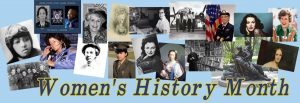
Let’s talk Women in Time of War.
There are so many, little known, brave women in our world history.
In 1716, Winifred Maxwell, Countess of Nithsdale, successfully smuggled her husband, Lord Nithsdale, out of the Tower of London, the day before he was due to be executed for his role in the 1715 Jacobite uprising . She supplied the guards with drink and then with friends created diversions while her hub’s beard was shaved and he was dressed in women’s clothes. Slick as anything William left with his wife’s friends. To buy time, Winifred stayed in the cell and carried on a conversation for the guards to hear. On her way out, she asked the guards not to disturb her husband because he was praying. Dang. The woman had courage.
In WWl a 17-year-old French woman, Emilienne Moreau, assisted the Allies and set up a first-aid post in her home.
Russian peasant Maria Bochkareva, twice wounded in battle, led the all-women combat unit the “Women’s Battalion of Death” on the eastern front. Look it up.
American journalist Madeleine Doty, determined to make a difference, traveled to Germany during the war to report the truth.
During WWll actress Hedy Lamarr developed a radio guidance system for Allied torpedoes which used spread spectrum and frequency hopping technology to defeat jamming by Axis powers. The principles are now incorporated in wi-fi and Bluetooth technology.
Julia Childs was a world-renowned chef. She was also a SPY. At the onset of World War II, she went to work for a newly formed government intelligence agency the Office of Strategic Services (OSS). She went on assignments around the world and played a key role in the communication of top-secret documents between U.S. government officials and their intelligence officers.
Nancy Augusta Wake. She ran away from her home in Australia at age 16. Worked as a nurse, traveled to New York and London. Married a wealthy Frenchman and became the single biggest thorn in the German’s side during WWll. The Gestapo called her the White Mouse because she eluded capture. She was their most wanted person and they put out a five million-franc reward for her capture. In a WWll movie if you see a woman depicted doing extraordinary things it is more than likely something Nancy actually did. She died in 2011 and I truly wish I had met her. There is simply too much to say about this amazing woman. I suggest you research her.
The women of London who, during the war, sent their children to the countryside in hopes they’d be safe then went about enduring the almost daily bombings of the city. Can you imagine?
Women Airforce Service Pilots, or WASPs. About 200 women flew planes during World War II but weren’t considered “real” military pilots. No flags were draped over their coffins when they died on duty. And when their service ended, they had to pay their own bus fare home.
An incredible group of Soviet women, most under 20 years of age, flew bombing missions during World War II. Many flying more than a thousand missions. The Germans feared them and gave them the name The Night Witches.
Rosie the Riveter, a name for American women who worked in factories during WWll, many in plants that produced munitions and war supplies. Rosie’s Canadian sister was just as determined and dedicated.
In 1945, Olivia Hooker became the first African-American female admitted into the United States Coast Guard. Dr. Hooker later earned a doctorate in psychology and had a long and distinguished career as a professor in New York, retiring at the age of eighty- seven. She is amazing.
Rose Valland a French art historian, and member of the French Resistance, a captain in the French military, and one of the most decorated women in French history. Rose is one of the greatest and yet unknown heroines of World War II. For four years, Rose risked her life daily to locate and return works of art stolen by the Nazis during their occupation of France. Her remarkable story remained unknown to the broad public until it was revealed in the book and movie The Monuments Men. I’ve stood in galleries admiring the art she saved and never knew about her until the book was released. It makes me sad the world didn’t know to thank her.
The contributions these ladies made are huge. Without them our world would be very different.
Rita
Mar 23 2019, 10:15 am in Women in the Civil War, Women in the Revolutionary War, Women's History Month

History.
I have a love hate relationship with history. I love learning history. I hate that it can be a less than accurate representation of what really happened. Why? Because history is being told through the lens of the writer. What they perceive. Their interpretation of the events, as an eyewitness, or of the facts from their research. Now, through the ages, history has been written by men. Stories told though the lens of a male eye. I’m not saying historians lied, only they rarely saw things from the woman’s point of view.
In the US we rarely hear about women in our early history.
I think of the women who came from all over Europe to settled North America. All the little mama’s, with children in tow, who had the courage to leave everything they knew, follow their husbands and get on a tiny, leaky boat and go to an unknown new world. They didn’t have a smart phone to check the weather, complain on social media the boat didn’t dock on time, or call an Uber driver to take them to an Inn. These women stood shoulder to shoulder with their man helping to build cities and colonize the wilderness. Traveling across prairies, mountains and wastelands in wagons.
I am fascinated in women’s roles in the American Revolution. How much do we actually hear about ladies during that time? There was Penelope Barker a loyal patriot of the American Revolution. Barker rallied 50 women— the first recorded women’s political demonstration in America—to sign a resolution boycotting British tea known as the Edenton Tea Party. North Carolina’s version of the Boston Tea Party. Don’t ya love it?
And there was Agent 555, an extraordinary woman, who was a member of the Culper Spy ring that George Washington says helped win the revolutionary war. To this day her identity is unknown. Anyone out there know?
For more stories about ladies in the Revolutionary War go here
Have you heard of Dr. Mary Walker? She is the only woman to receive the Congressional Medal of Honor for her efforts to save lives during the civil war. Congress eventually revoked her medal saying she was a civilian and asked for its return. Mary, quite the outspoken character, refused and wore the medal proudly every day until she died.
Rose O’Neal Greenhow was a Confederate spy. A Washington, D.C., socialite, with friends in high places made her an excellent spy. Jefferson Davis said she was responsible for the South’s victory at the First Battle of Bull Run.
Frances Clalin disguised herself as a man, and she and her husband enlisted in a Missouri regiment. A wife and mother of three children, she fought alongside Union forces for a year.
To discover more about women during the Civil War go here
Rita
Mar 20 2019, 10:32 am in History From a Women's POV, Women's History Month, Writing Your Family History

As a writer I’m asking you to take some time and talk to the women in your family to get the other half of the story. Other half of the story? Yes. World events, disasters, family triumphs and celebrations told from their unique point of view. The vast majority of historical events is written from a male perspective. Hearing a woman’s point of view can be enlightening.
Where they were, what they thought when Neil Armstrong set foot on the moon.
Who in your family remembers rationing during WWII? Ask how difficult it was during that time to go months without letters from a loved one.
Find out what it was like to have a family member in Vietnam and, for the first time in history, see the war on the news every evening.
What they remember about Jackie Kennedy.
Their first car. Boyfriend. The time they met Elvis. The real reason Aunt Gertrude left town. How Uncle Johnny got all his money.
Have you ever spoken to your mom about the day you were born?
Do you know the black sheep of your families?
How did the women in your family meet the love of their life? What they thought when they did. I asked this question at a ladies gathering. One gal shared how she met the love of her life and then told us how she met her husband. Do you want your children to know how you met their father?
A family member was going to reveal a huge—her word—family secret to me. We’d set up a time for me to go over and hear this secret. She died before she could tell me. I’m left with a bazillion questions and a great deal of regret.
Don’t have this happen to you. Transfer your family stories to words on the page so they will never be lost.
Rita
Mar 17 2019, 11:02 am in Irish Story, St Patrick's Day
Lá Fhéile Pádraig Sona Duit!
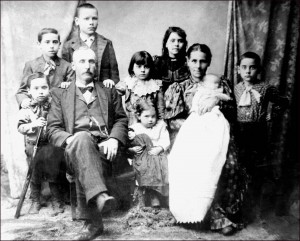 What’s your Irish History? What’s your Irish History?
On my daddy’s side of the family, the O’Brien’s, my Irish history can be traced to the early 1800’s. This family picture was taken about 1897 probably in Braidwood IL. My grandpa was Moses O’Brien, the dashing young man on the left holding the toy gun.
An Irish story
The characters Gemma and Ben, my heroine and hero from Under Fire: The Admiral, shared an experience they had a few months ago while visiting Ireland.
They were in the Irish countryside on a very dark, stormy night–really it was–in the middle of nowhere. They’d stopped at a local pub for dinner and were enjoying the food, pints, and conversation when the pub door slammed open. A soaking wet, obviously upset young man stood in the doorway. He rushed in babbling about a horrible experience.
He was settled into a chair and given a pint. The beer was half-gone before he could string words into sentences and answer the many questions. The young man explained he was backpacking through Ireland and on a deserted road when it began raining so hard he could hardly see a few feet ahead of him. Finally, a car came slowly towards him and stopped. Desperate for shelter and thinking he was being offered a ride, he got in and closed the door only to realize there was nobody behind the wheel. Even though the engine wasn’t on, the car once again started moving. Ireland’s many ghost stories rumbled through his brain and fear paralyzed him. That is until he looked at the road ahead and saw a curve looming. Gathering courage, he prepared to jump. Then, through the driver’s window, a ghostly hand appeared out of gloom. In terror, he watched as the hand turned the wheel, guiding the car around the curve.
The lights of the pub appeared and gathering strength, he jumped out of the car and ran for it.
A silence enveloped the pub when everybody realized he was crying.
Once again the door slammed open, startling everyone, and two men walked in from the dark and stormy night. They too were soaked and out of breath. Looking around, and seeing the young man sobbing at the bar, one said to the other…
“Look ….there’s that fookin idiot that got in the car while we were pushing it!”
Rita
Mar 1 2019, 12:42 pm in extraordinary women, Women's History Month
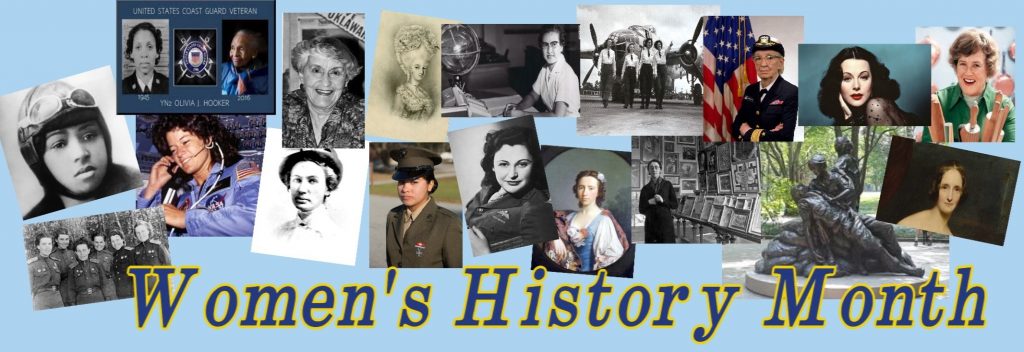
March is National Women’s History month.
I write about strong, extraordinary women. This month I’ll be posting about women I admire. Women who have moral courage and an ability to get beyond danger and do what is right because it needs to be done. Women from around the world who I think have made a difference.
In the meantime please check out the marvelous web page of The National Women’s History Museum http://www.nwhm.org/ and the Women throughout American History on the Library of Congress page https://womenshistorymonth.gov/
And be prepared to spend some time on those pages. 🙂
Rita
Dec 16 2018, 12:00 am in Christmas, Lighthouse
To welcome the Christmas Season I’m sharing photos of a few Lighthouses in their Christmas finery.
The St. Augustine Florida light. Photo by John Joseph.

Tree at the bottom of the light.
The St Augustine Florida Light Keepers house on with thousands of luminaries.


The Santibel Light.

Tybee Island

Marbel Head Ohio

Montauk Light
Nubble Light

Deer Isle Light
Aren’t these fantastic?
Merry Christmas to all.
Dec 14 2018, 8:48 am
THE PROFESSIONAL HOLIDAY VICTIM CHECK LIST.
You may be a professional victim if you:
Leave your car unlocked.
Carry every credit card known to man when you shop.
At night park in an unlit area of the mall and walk to your car by yourself.
Walk to your car with ear buds in and music blaring.
Leave packages in your car where they can be seen.
Put packages in the trunk and don’t lock the car.
Leave your purse and keys in an unlocked car. Even if it’s in your driveway.
Leave your home unlocked at any time.
Leave your garage door open and the access door to you home unlocked.
Use your credit card on an unsecured web site.
Things you can do to protect yourself.
Carry only the CC you intend to use.
Check your CC statement frequently.
Before using your debit card examine the card slider. Make sure a ‘skimmer’ has not been added. A skimmer is a device thieves place on the slider, most often at gas pumps and ATM machines. It captures ALL your info including the pin number. Within minutes thieves can make a new card, go to an ATM and make a withdrawal.
Also when using the card any place, pharmacy, grocery, what have you, look around. See anyone close with a phone? They could be videoing you as you enter the pin number. They have a picture of the card and what keys you push. Harder and less frequent but it does happen. If you feel uncomfortable hit credit instead of debit.
Carry a purse with zipable compartments and zip them.
Use a purse that has a long strap and put it over your arm and head.
If someone, man, woman or child, bumps into you immediately check your purse.
Don’t leave your purse unattended in a shopping cart. If you must put your purse in the cart, loop the child safety strap through the handles. Close it up. Makes it harder to grab and run. Don’t ever walk away from it.
Carry your keys in your pocket. If you purse is snatched they won’t be able to drive away in your car and be in and out of your house before you get there.
Don’t be afraid to ask store security to walk you to your car. Don’t ask them to help carry your packages.
Be alert and if you feel uneasy, there is a reason. Listen to your inner warning system. Don’t hesitate to call Law Enforcement for help.
IRS and Social Security will NOT call you about a problem. They will send an official letter. NEVER give any info out over the phone. IRS will never ask you to pay a supposed debt with gift card.
Be safe out there. This holiday season don’t drink and drive and please take care of your personal and financial safety.
Rita
Nov 12 2018, 7:55 pm
War heroes come in many sizes shapes and species. Yeaph! Species. There are many animal war heroes. I believe we are most familiar with military working dogs (MWD) and K9 officers. Dogs have been in warfare since ancient times used as scouts, sentries and trackers. They sniff out explosive devises saving countless lives. They are assigned to safe guard generals and political personnel on visits outside the country. They’ve suffered severe trauma, lost limbs and been honored for their bravery with medals.
Layka, a Belgian Malinois, was shot four times at point-blank range by enemy forces in Afghanistan. Despite her injuries, she attacked and subdued the shooter, protecting her handler, and other members of the team. Photographer, Martin Schoeller, did an amazing photoshoot of Layka, the now three-legged dog, for National Geographic. I’d love to share his photos here but I don’t have permission. This is the link to his page to see this brave beautiful dog.
Sgt Stubby, a war hero from WWI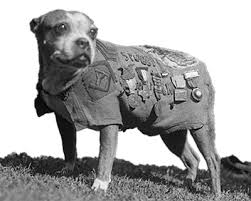
He wandered into the training encampment of the Massachusetts of 102nd infantry in 1917. When the unit shipped out to France, Stubby was smuggled aboard ship. On the battle field, the dog alerted his friends to German attacks. He was wounded by a hand grenade, gassed several times, and once found and held a German spy by the seat of the pants until the troops could complete the capture.
When his master was wounded, Stubby accompanied him to the hospital and made rounds to cheer the troops. Sgt. Stubby survived the war and Gen. John Pershing, personally awarded him a gold medal for one of his many efforts. He became a highly decorated dog, among his medals a Purple Heart, and various veteran’s awards. Stubby returned home at the end of the war and became quite the celebrity. He was made a lifetime member of the American Legion, the YMCA, and the Red Cross. He lived at the Y and made recruiting tours for the Red Cross. Stubby passed on in 1926, he was preserved and displayed with his medals at the Smithsonian Institution.
Now let’s talk about some of the other animal heroes maybe not so well known like Staff Sergeant Reckless,USMC
The Staff Sergeant was a beer-guzzling, American hero war horse who bravely transported ammunition and carried wounded Marines to safety under enemy fire in the Korean War
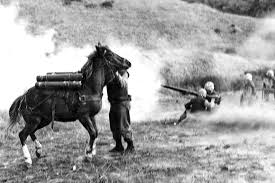
She served with the Recoilless Rifle Platoon, Anti-Tank Company, 1st Marine Division, was bought for $250 at a race track in Seoul during the war. The marines taught her to walk over trip wires, avoid incoming enemy fire and deliver huge packs of ammunition during battle.
During the five day Battle of Outpost Vegas in 1953 in one day she made 51 solo—that’s by herself— trips from the Ammunition Supply Point to the firing sites. Marine Corps history say this battle was particularly savage and Reckless was in the middle of it. Enemy soldiers could see her as she made her way across the deadly “no man’s land” rice paddies and up 45-degree mountain trails to the firing sites. “It’s difficult to describe the elation and the boost in morale that little white-faced mare gave Marines as she outfoxed the enemy—remember she was on her own—bringing vitally needed ammunition up the mountain,” Sgt. Maj. James E. Bobbitt recalled.
She carried 386 rounds of ammunition (over 9,000 pounds – almost FIVE TONS! — of ammunition), walked over 35 miles through open rice paddies and up steep mountains with enemy fire coming in at the rate of 500 rounds per minute. She would carry wounded soldiers down the mountain, unload them, get reloaded with ammo, and off she would go back up to the guns. She also provided a shield for several Marines who were trapped trying to make their way up to the front line. Wounded twice, she didn’t let that stop or slow her down.
Her heroics defined the word “Marine.” She was BELOVED by the Marines. They took care of her better than they took care of themselves – throwing their flak jackets over her to protect her when incoming was heavy, risking their own safety.
Her Military Decorations include two Purple Hearts, Good Conduct Medal, Presidential Unit Citation with star, National Defense Service Medal, Korean Service Medal, United Nations Service Medal, Navy Unit Commendation, and Republic of Korea Presidential Unit Citation.
There is a book about Sgt. Reckless. She has a face book page and she has a bronze statue.
Okay I find this one really well, odd. But Wojtek the bear was bought and adopted by Polish soldiers making their way back east after they were released from a prison camp in Siberia in 1942.
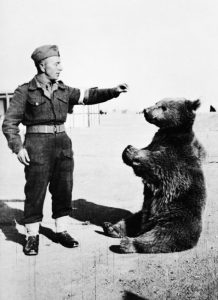
When the unit re-entered the war the only way they could take Wojtek with them was to make him an official soldier. So he became Corporal Wojtek of the artillery supply unit. Wojtek fit in quite well—his favorite activities included wrestling, drinking beer, and Taking showers.
The 440-pound bear became an ammo carrier that ferried heavy artillery rounds to the guns and he was good at his job. His finest hour came during the Battle of Monte Cassino, when he loaded 100-pound boxes of artillery shells into trucks all day long, every day until the battle was won. The army honored Wojtek’s service by putting his image, carrying ammo, on the unit’s official badge. After the war, Wojtek was housed at the Edinburgh Zoo until his death in 1963.
Then there are our feathered heroes.
Quite a few carrier pigeons were honored for their service in war. Cher Ami, a messaging pigeon serving in the Argonne Forest with the 77th Infantry. Joe an American pigeon.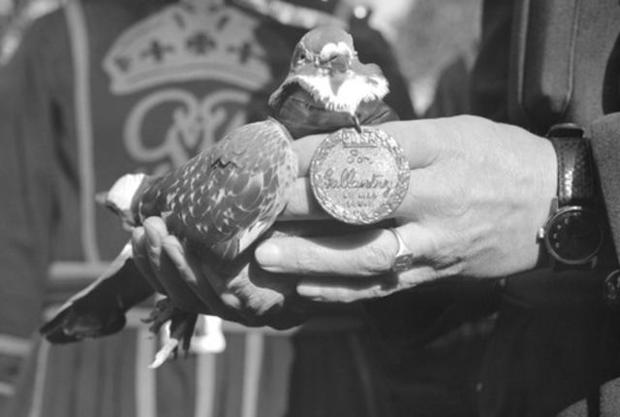
In WW1, Cher Ami, a messaging pigeon was serving in the Argonne Forest with the 77th Infantry Division when the battalion of 550 soldiers she was with was completely cut off by German forces. After four days of heavy fighting, friendly artillery decided the battalion must have surrendered already and began firing on them. Ouch! Remember this WW1 could get on the cell and tell them to knock that crap off. They had to use carrier pigeons. Three were sent out and quickly shot down. Cher Ami, with a hole in her chest and a nearly amputated leg, got back into the air and delivered her message. Wow! 194 soldiers made it out alive thanks to her actions.
Joe an American pigeon from Fort Monmouth, N.J. was in Italy. The British advanced on a town the Germans had abandoned and… that U.S. planes were about to strike. Radio communications couldn’t reach the airfield 20 miles away to tell them the German were gone. Joe saved the day. He carried a message, covering the entire 20 miles in only 20 minutes. His message reached the airfield just as the bombers were taxiing for take off. With only five minutes to spare, the bombing run was canceled, saving the lives of at least 1000 British troops.
Joe retired to the Detroit Zoological Gardens until he died in 1961 at age 18. His body was mounted and displayed for years at Fort Monmouth, which closed in 2011.

A pig, Tirpritz, was carried on the German warship Dresden in 1914 as a food source. The Dresden was sunk in battle with the HMS Glasgow off the coast of South America. Tirpitz escaped the sinking ship and swam to the Glasgow. The crew brought him aboard and adopted him as a mascot, named him after German admiral Alfred von Tirpitz and he spent a year aboard. Tirpitz was eventually auctioned off as pork, but in his final act he raised £1785 for the British Red Cross. His mounted head is on display at the Imperial War Museum in London. Tirpitz’s trotters were made into handles for a carving set that traveled with the Glasgow in World War II, giving Tirpitz the dubious honor of serving aboard the ship in two wars.
Nov 11 2018, 10:38 am
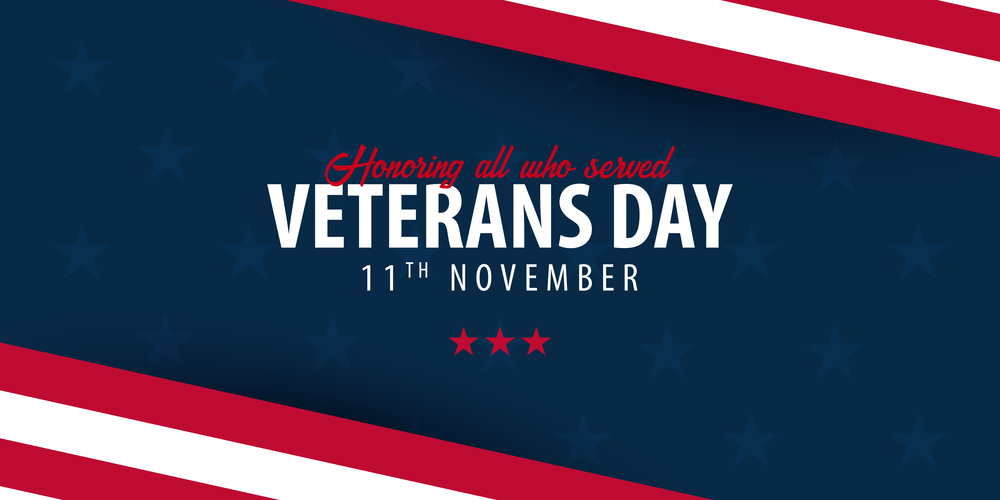
November 7 through November 11 was, and still is, a special time for me. The 7th is my wedding anniversary. The 10th is the Marine Corps Birthday and the 11th is Veteran’s day. Hubs—Ed—was a Marine. I haven’t been able to celebrate with him for 15 years. But, I remember. I remember while in the corps he was gone for more of our special days and holidays than he was home. I remember after one of his deployments to Vietnam we didn’t have turkey or ham for years because the only hot meals he received while there was one of those. The taste and smell brought back memories of things he said he would never tell me. I remember the time we were in Madrid for our anniversary. He and a friend, who both had consumed way to much adult beverages, convinced the little band in the bar where we were spending the evening to play a version of an anniversary song. They enjoined all the patrons to sing. He kissed me and said, for all the times I wasn’t there. It was so unlike him I cried. When our son was with the first Marines into Bagdad he said he hated him learning what war was really about.
To honor my husband, I remember all the men and women who serve honorably around the world every day. One thing I do is check the FB page, Seal of Honor. There I can see the faces and read the names of those who have served. See daddies meet their children for the first time. See parents putting flowers on the grave of their young sons who will never have sons of their own.
I not only think about the men and women serving, I think about their families. It’s true these days families are more in touch with those serving in combat zones and in faraway places. Service men and women Skype, call frequently, and tours are a few months at a time. But listen to me very carefully. The fear, pain, and loneliness the families feel every second, of very bit of the time their loved ones are away cannot be explained to anyone who has not experienced it. The thought the person you love can be killed in a firefight or step on an IED as you are drinking a cup of coffee is breath stealing. Or, as you breathe right now, another person takes his last breath for your freedom. To survive you shut something off. If you want to know what an unsung hero looks like look into the faces of a military family.
Please, while everyone is remembering our heroes, take time to remember and honor the silent heroes, the families. The families who serve also, albeit by default, but serve they do.
If you are so inclined join the families in a daily prayer to bring their loves ones home safe.
|


